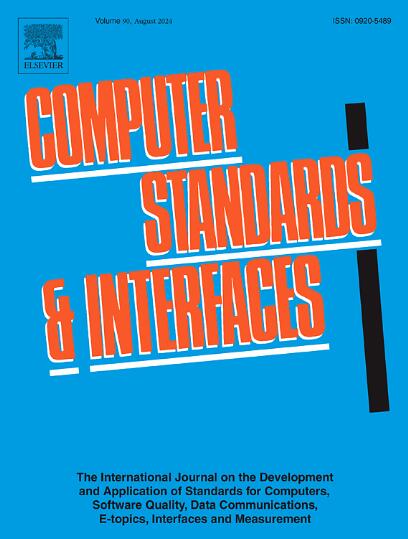Privacy-preserving authentication protocol for user personal device security in Brain–Computer Interface
IF 3.1
2区 计算机科学
Q1 COMPUTER SCIENCE, HARDWARE & ARCHITECTURE
引用次数: 0
Abstract
Brain–Computer Interface (BCI) technology has emerged as a transformative tool, particularly for individuals with severe motor disabilities. Non-invasive BCI systems, leveraging Electroencephalography (EEG), offer a direct interface between users and external devices, bypassing the need for muscular control. However, ensuring the security and privacy of users’ neural data remains a critical challenge. In this paper, we propose a novel privacy-preserving authentication scheme for EEG-based BCI systems, utilizing elliptic curve cryptography (ECC). Our scheme balances robust security with computational efficiency, making it suitable for resource-constrained environments. Since we are addressing security in a resource-constrained environment, such as EEG in BCI, we have constructed a lightweight authentication algorithm to meet the stringent requirements of minimal computational resources and energy consumption. The security analysis and performance evaluation of the authentication protocol show that our scheme is resistant to various attacks, such as replay, offline password guessing, privilege insider, user impersonation, and smart card stolen attacks. It offers mutual authentication and key agreement, requiring only 1632 bits of communication cost and 15.67139 ms of computational cost for the entire login authentication and key agreement phase. Our study lays a solid foundation for future investigation of innovative solutions for BCI security.
脑机接口中用户个人设备安全的隐私保护认证协议
脑机接口(BCI)技术已经成为一种变革性的工具,特别是对那些有严重运动障碍的人来说。利用脑电图(EEG)的非侵入性脑机接口系统,在用户和外部设备之间提供了一个直接的接口,绕过了对肌肉控制的需要。然而,确保用户神经数据的安全性和隐私性仍然是一个关键的挑战。在本文中,我们提出了一种新的基于脑电图的BCI系统的隐私保护认证方案,利用椭圆曲线加密(ECC)。我们的方案平衡了健壮的安全性和计算效率,使其适合于资源受限的环境。由于我们是在资源受限的环境中解决安全问题,例如脑机接口中的EEG,因此我们构建了一个轻量级的认证算法,以满足最小计算资源和能耗的严格要求。对认证协议的安全性分析和性能评估表明,该方案能够抵御各种攻击,如重放攻击、离线密码猜测攻击、特权内幕攻击、用户冒充攻击和智能卡窃取攻击。它提供了相互认证和密钥协议,整个登录认证和密钥协议阶段只需要1632比特的通信开销和15.67139 ms的计算开销。本研究为未来BCI安全创新解决方案的研究奠定了坚实的基础。
本文章由计算机程序翻译,如有差异,请以英文原文为准。
求助全文
约1分钟内获得全文
求助全文
来源期刊

Computer Standards & Interfaces
工程技术-计算机:软件工程
CiteScore
11.90
自引率
16.00%
发文量
67
审稿时长
6 months
期刊介绍:
The quality of software, well-defined interfaces (hardware and software), the process of digitalisation, and accepted standards in these fields are essential for building and exploiting complex computing, communication, multimedia and measuring systems. Standards can simplify the design and construction of individual hardware and software components and help to ensure satisfactory interworking.
Computer Standards & Interfaces is an international journal dealing specifically with these topics.
The journal
• Provides information about activities and progress on the definition of computer standards, software quality, interfaces and methods, at national, European and international levels
• Publishes critical comments on standards and standards activities
• Disseminates user''s experiences and case studies in the application and exploitation of established or emerging standards, interfaces and methods
• Offers a forum for discussion on actual projects, standards, interfaces and methods by recognised experts
• Stimulates relevant research by providing a specialised refereed medium.
 求助内容:
求助内容: 应助结果提醒方式:
应助结果提醒方式:


